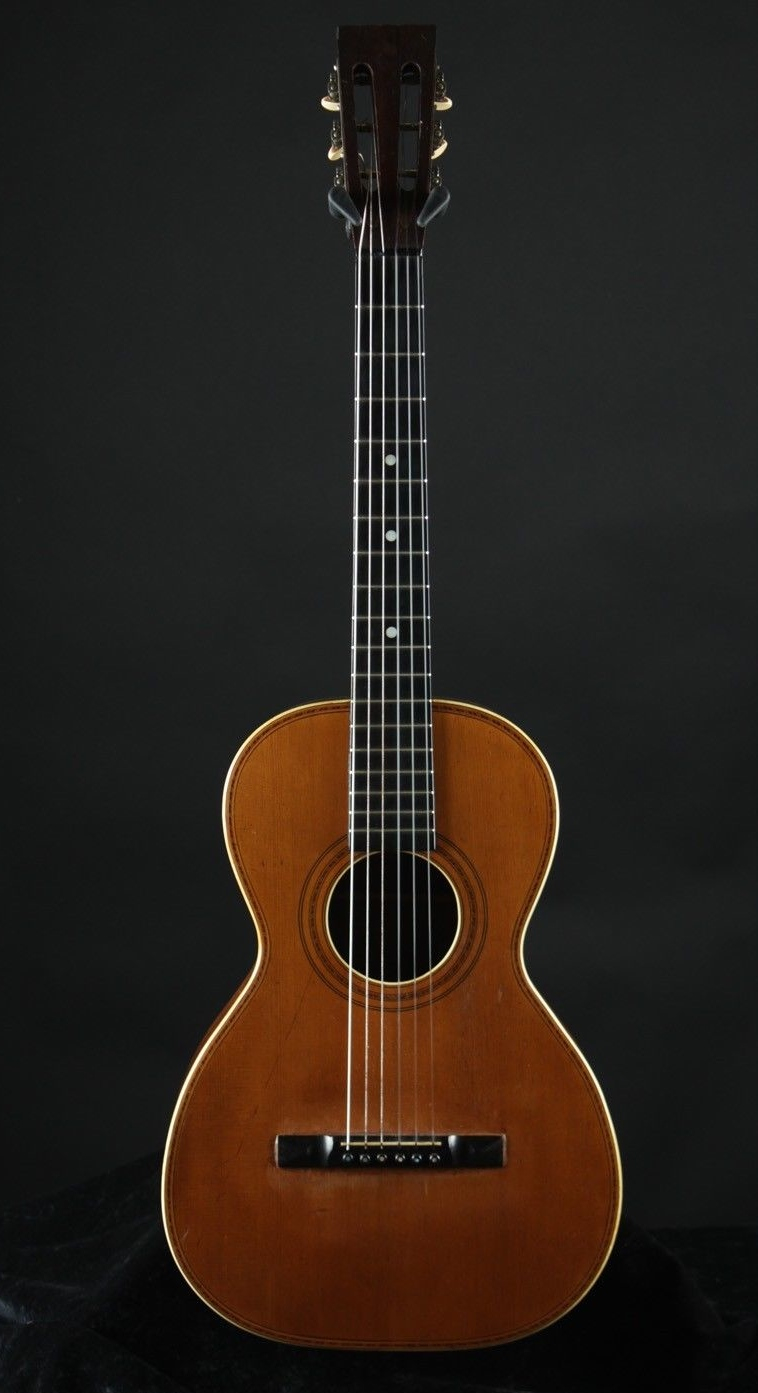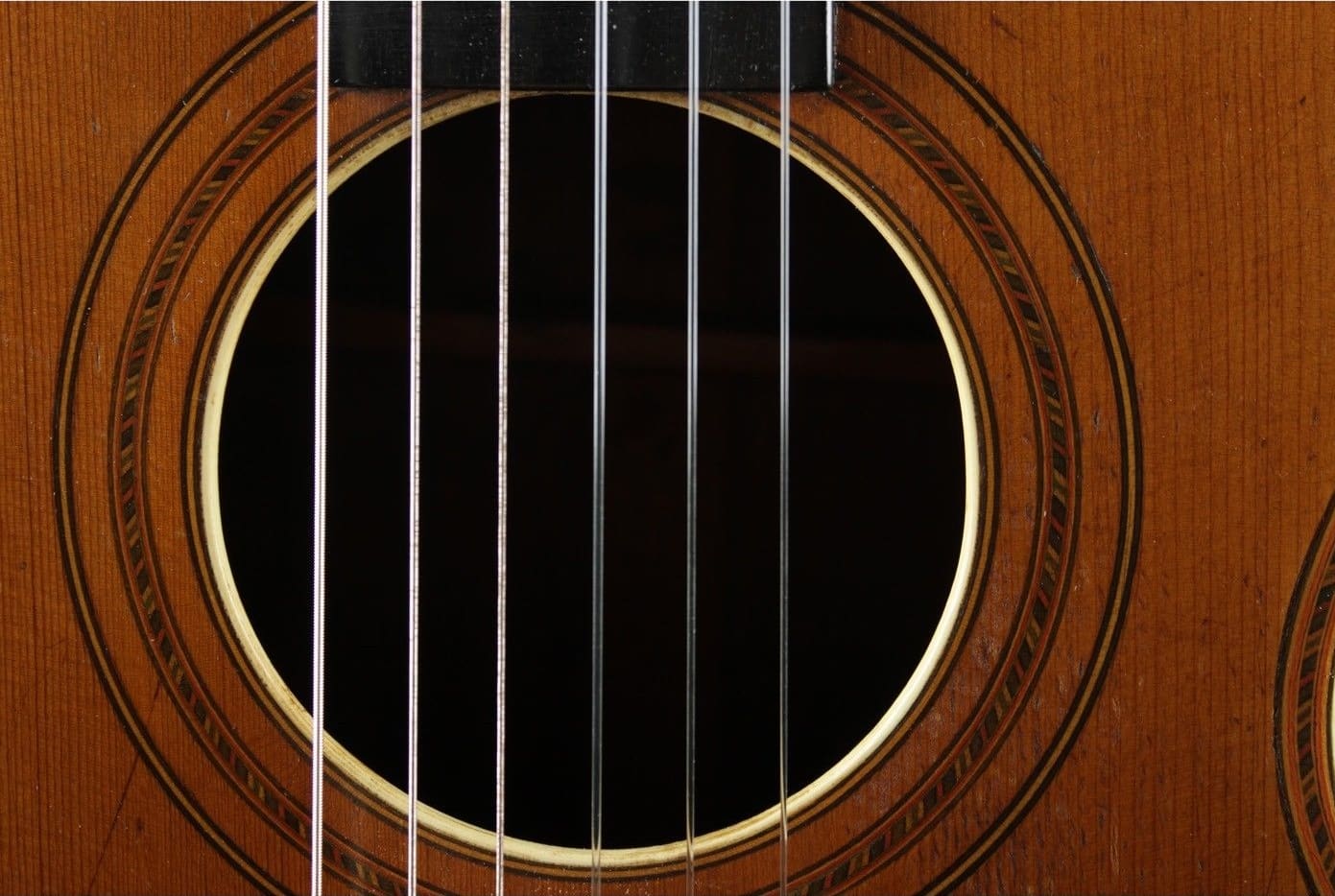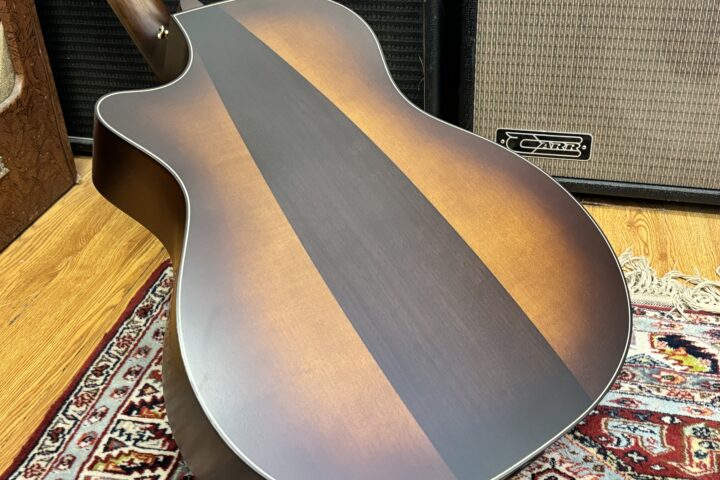Circa 1900 G.R. Martin & Co. Guitar
No, that’s not a typo, this really is a G.R. Martin & Co. guitar, not one made by C.F. Martin. I’ve seen a few of these over the years and I’ve never been able to find out if Mr. G.R. Martin really existed or if someone picked the name because the G and the R, when stamped in wood, were easily mistaken for a C and an F. About half of the G.R. Martins I’ve seen were owned by people who were convinced they had an instrument made by C.F. Martin, and I suspect in 1900 a lot of people buying these new thought the same thing. Whatever the story is, I think the labeling of these comes right up to the edge of being dishonest without quite stepping over the line. (If you want to see some actual fake Martins from around 1900, check out this trio of counterfeits over at Frets.com.)
The funny thing is, G.R Martins are not bad guitars. They aren’t as nice as Martins, but they are better than a lot of other guitars from the same period. If the builder just used a different name they probably would have sold pretty well. This particular example is currently listed on eBay with a Buy It Now price of $1000, which seems about right for a rosewood guitar of this quality and age. I’m very pleased to see that the seller has described this instrument as a G.R. Martin because I’ve seen many listings where unscrupulous or ignorant people call guitars very much like this like C.F. Martins. Scroll down to the other photos and I’ll give you a few hints for spotting non-C.F. Martins from photos.

The first thing to notice is the body shape is wrong. Look at the back where neck joins the body. See that little flat spot right below the heel? A real C.F. Martin has a very gentle curve in the that area. Click here to see a 1900 00-28 that shows what I’m talking about.

On a Martin from this period, the headstock would most likely have been grafted on and there would be a reinforcing volute behind the nut. This detail on a 1900 00-28 shows the dart. Incidentally, this is where the headstock dart you see on D-28s come from.

On guitars from this period, C.F Martin didn’t use binding on the rim of the soundhole. Also, the purfling around the soundhole is a pattern Martin didn’t use. One day I would love to find out what the story behind G.R. Martin is. The builder of this guitar put a lot of extra work into it that he didn’t need to, if he was just trying to pass off a C.F. Martin forgery.
Still interested in it? Check it out on eBay here.




